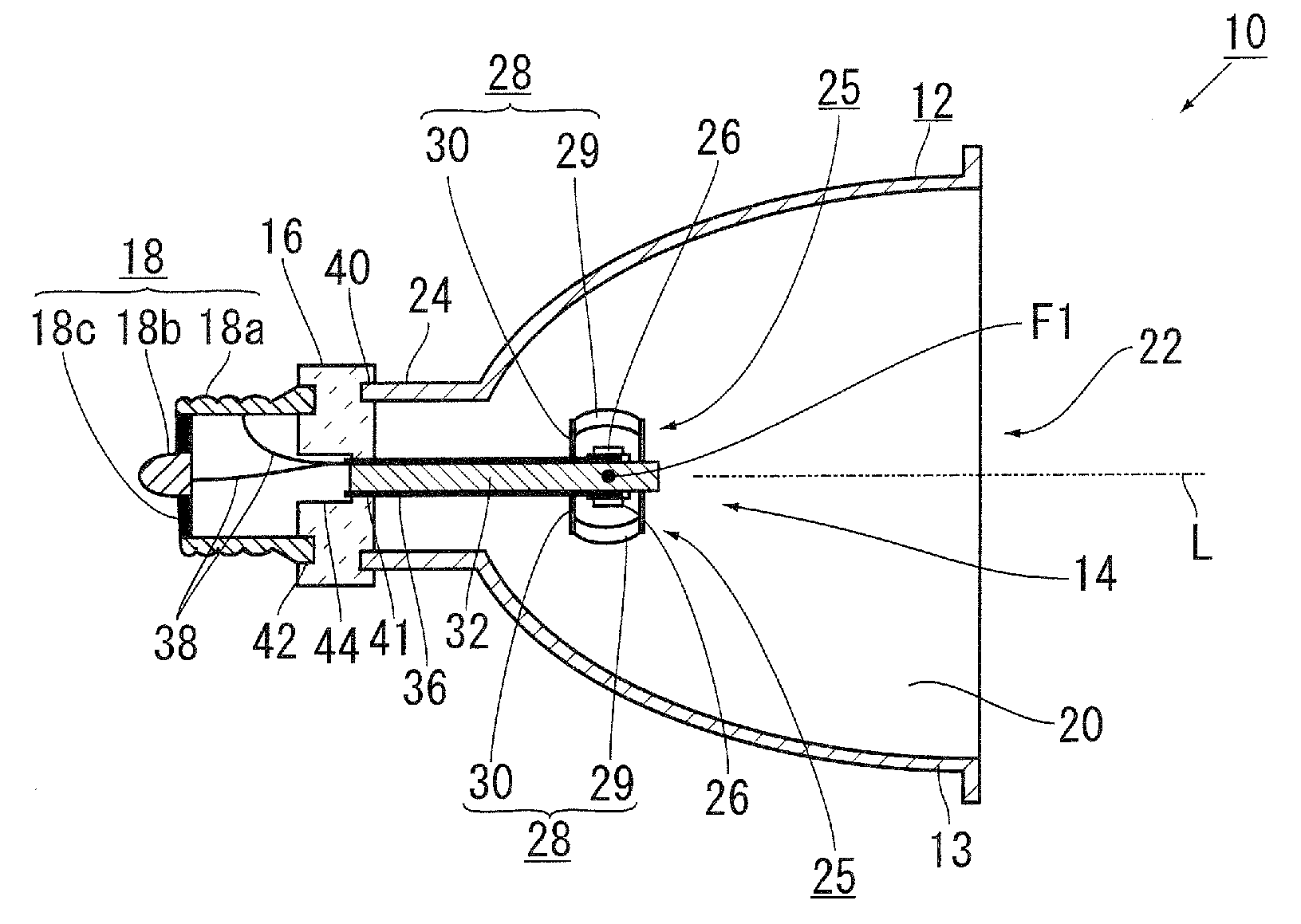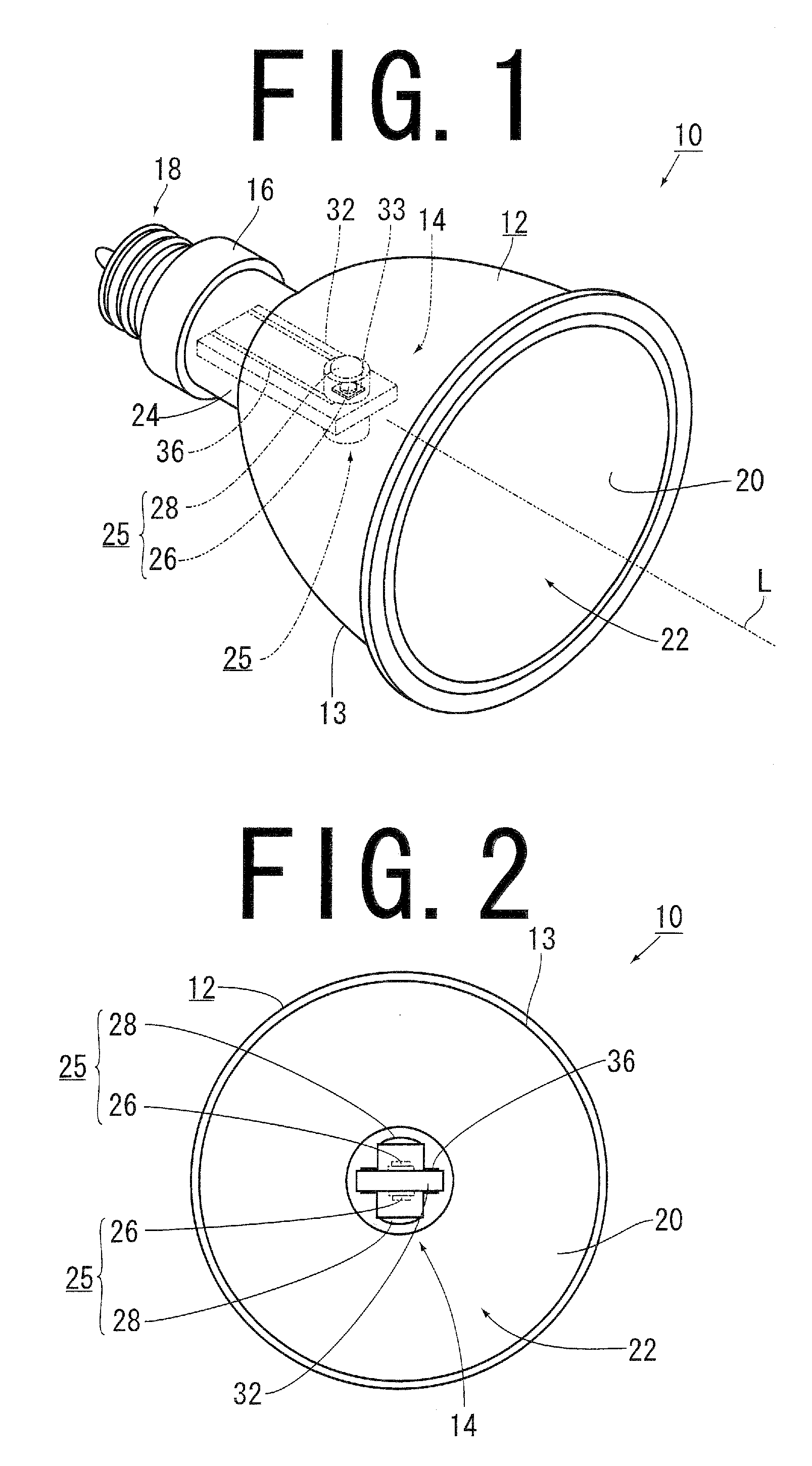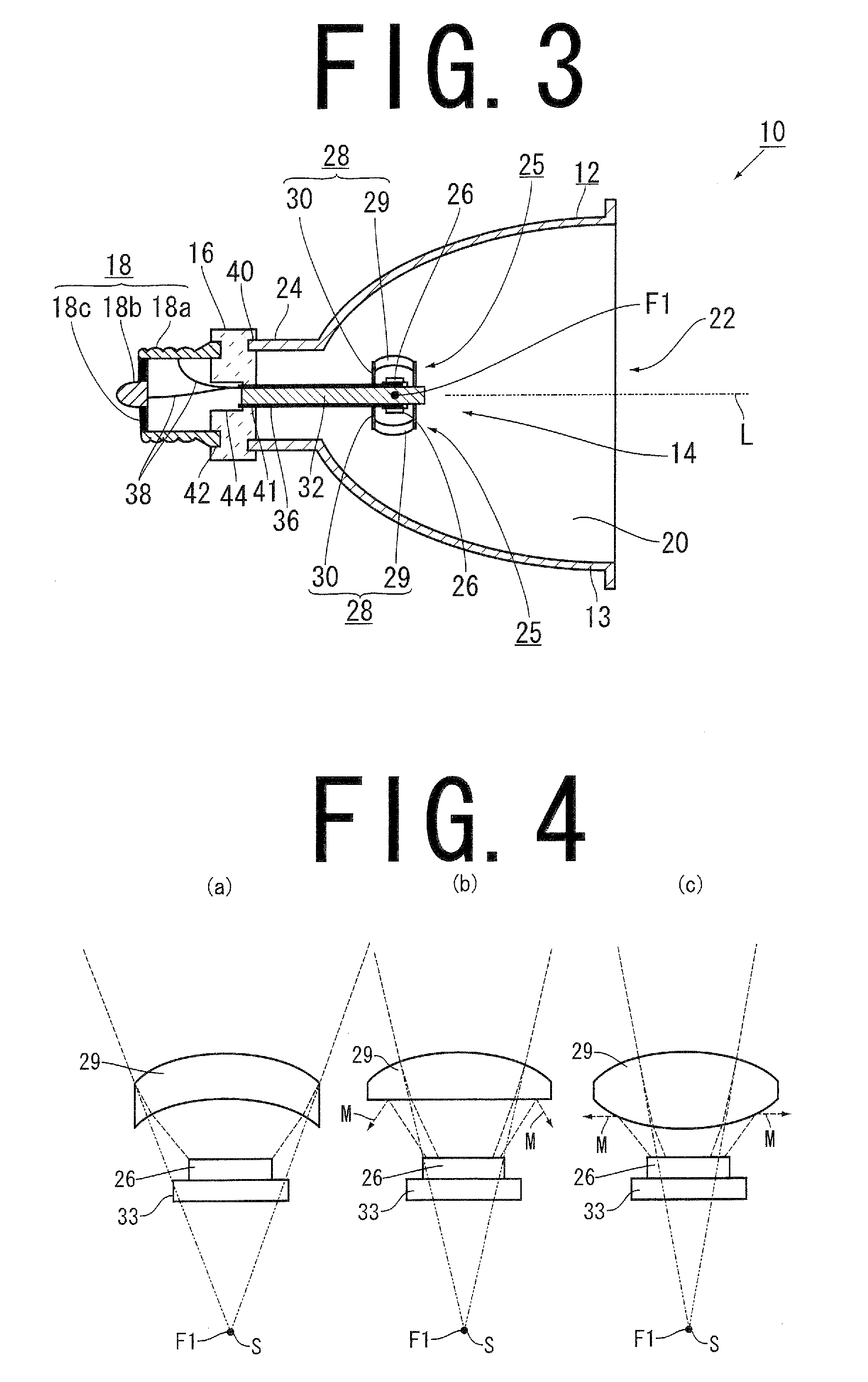Light emitting device
a light-emitting device and light-emitting technology, which is applied in the direction of semiconductor devices for light sources, incadescent envelopes/vessels, light-emitting devices, etc., can solve the problems of lack of versatility, above-described special concave mirrors, and lack of versatility, so as to improve the uniformity ratio of illumination, brighten the irradiation surface, and use light more efficiently
- Summary
- Abstract
- Description
- Claims
- Application Information
AI Technical Summary
Benefits of technology
Problems solved by technology
Method used
Image
Examples
first embodiment
[0043]A light emitting device 10 according to the present invention is used for general illumination or for a projector, and comprises, as shown in FIG. 1 to FIG. 3, a concave mirror 12, a light source unit 14, a holder 16 for holding a light source unit 14, and a power supply terminal 18.
[0044]The concave mirror 12 has: a light reflection surface 20 which causes light internally emitted to be reflected; a light-emitting opening 22 through which light reflected on the light reflection surface 20 is outputted from the concave mirror 12; and a central fixing cylindrical portion 24 which is arranged at a central bottom portion of the concave mirror 12, and has a holder 16 fixed thereto. A straight line which passes through the center of the concave mirror 12, and is perpendicular to the light-emitting opening 22 is a central axis L of the concave mirror 12.
[0045]Glass, aluminum, and the like are used as a material of the concave mirror 12, and the light reflection surface 20 is treated...
second embodiment
[0062]In the same manner as the first embodiment, the light emitting device 10 according to the second embodiment also includes the concave mirror 12, the light source unit 14, the holder 16 for holding the light source unit 14, and the power supply terminal 18. In the first embodiment, the light reflection surface 20 is constituted of an ellipsoid, whereas, in the second embodiment, the light reflection surface 20 is constituted of a paraboloid. The constitution of the light reflection surface 20 is the only different point between the embodiments, and the first embodiment is incorporated for those common component parts in the present embodiment. Accordingly, the different light reflection surface 20 is mainly described with reference to FIGS. 1 to 3.
[0063]The light reflection surface 20 of the light emitting device 10 according to the second embodiment has a paraboloid centered on the central axis L. The “paraboloid” has a feature that causes all the light emitted from the focal ...
PUM
 Login to View More
Login to View More Abstract
Description
Claims
Application Information
 Login to View More
Login to View More - R&D
- Intellectual Property
- Life Sciences
- Materials
- Tech Scout
- Unparalleled Data Quality
- Higher Quality Content
- 60% Fewer Hallucinations
Browse by: Latest US Patents, China's latest patents, Technical Efficacy Thesaurus, Application Domain, Technology Topic, Popular Technical Reports.
© 2025 PatSnap. All rights reserved.Legal|Privacy policy|Modern Slavery Act Transparency Statement|Sitemap|About US| Contact US: help@patsnap.com



